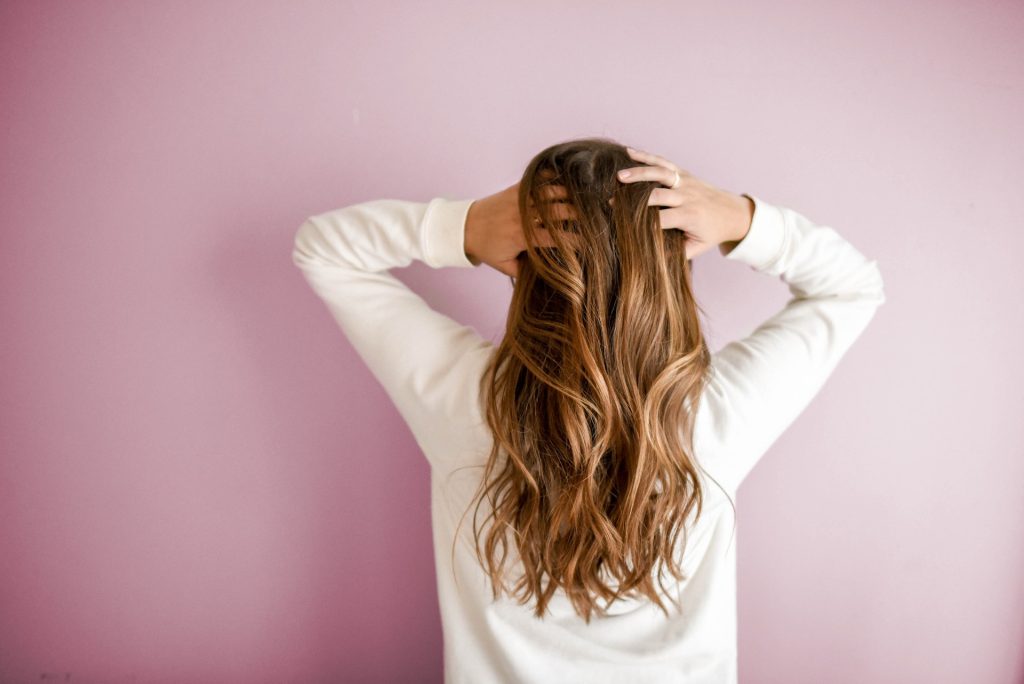Discover the connection between hormone levels and hair thinning in this informative article.
How Do Hormone Levels Affect Hair Thinning?
Do you ever look in the mirror and wonder where those luscious locks of yours have gone? Well, my friend, the answer might just lie in those pesky hormones swirling around your body. Yes, you heard me right – hormones! But fear not, because today, we’re going to dive headfirst into the glorious world of hair growth and hormonal havoc.
Understanding the Basics of Hair Growth

Before we unravel the mysteries of hormone-related hair thinning, let’s take a moment to understand how our hair grows. You see, our hair follicles have a mind of their own. They go through a delightful process called the hair growth cycle.
Now, picture this: your hair follicles are like tiny factories, working tirelessly to churn out those beautiful strands we all adore. But just like any well-oiled machine, they have different phases of production.
First, we have the anagen phase – the growth spurt of your hair journey. This is when your hair follicles are hard at work, plumping up those hairs with all the nutrients they need to flourish.
During the anagen phase, the cells in the root of the hair divide rapidly, pushing the hair shaft up and out of the follicle. This phase can last for several years, resulting in long, healthy hair. However, the length of the anagen phase varies from person to person, which is why some people can grow their hair longer than others.
Next comes the catagen phase – a short, transitional period where your hair decides it’s time to take a rest. Think of it as a well-deserved vacation for your follicles.
During the catagen phase, the hair follicle shrinks and detaches from the blood supply. This phase lasts for about two to three weeks, and during this time, the hair stops growing. It’s like a brief intermission before the next act of the hair growth cycle begins.
Then we have the telogen phase – the calm before the storm. Your hair has stopped growing and is hanging on for dear life, while a fresh strand eagerly waits to push it out of the way.
During the telogen phase, the hair follicle remains dormant for about three months. While the old hair is resting, a new hair begins to form in the follicle. This new hair pushes the old hair out and the cycle starts again.
Finally, the exogen phase arrives – the dramatic finale where your hair decides to make a grand exit. But don’t worry, it’s just making room for the new kid on the block.
During the exogen phase, the old hair sheds naturally, making way for the new hair to grow. On average, we shed about 50 to 100 hairs a day, and this is a normal part of the hair growth cycle. So, don’t panic if you see a few strands in your hairbrush or on your pillow.
Role of Hormones in Hair Growth
Now that we’ve got the hair growth cycle down to a T, let’s introduce our main characters – hormones! These tiny messengers hold quite a bit of power over our precious strands.
One of the hormone superstars is none other than estrogen. Ladies, you know the drill – it’s like the Beyoncé of hormones, responsible for keeping our hair looking fabulous. Estrogen promotes hair growth, making our locks feel thick and luxurious.
Estrogen not only stimulates the anagen phase, but it also prolongs it, giving our hair more time to grow. It also increases the diameter of the hair shaft, making our hair appear fuller and healthier.
On the other side of the hormonal spectrum, we have dihydrotestosterone (DHT). This sneaky little critter is a derivative of testosterone and can wreak havoc on our hair follicles. It tends to shrink them, leading to thinner and wispier hairs.
DHT binds to the receptors in the hair follicles, causing them to miniaturize over time. This miniaturization process makes the hair shafts thinner and shorter, eventually leading to hair loss. In individuals with a genetic predisposition to hair loss, DHT plays a significant role in the progression of androgenetic alopecia, also known as male or female pattern baldness.
Understanding the role of hormones in hair growth is crucial in identifying and addressing any imbalances that may contribute to hair thinning or hair loss. By maintaining a healthy hormonal balance, we can support the natural growth and vitality of our hair.
The Connection Between Hormones and Hair Thinning
Now that we’ve laid the groundwork, let’s explore how hormonal imbalance can send our hair into a frenzy.

How Hormonal Imbalance Leads to Hair Loss
Picture this: your hormones are dancing a wild disco in your body – some are doing the tango, while others are attempting the moonwalk. When that delicate hormonal balance is disrupted, it can send signals to your hair follicles, causing them to go haywire.
Excessive production of DHT, for example, can flood your follicles with bad vibes, leading to their shrinkage and subsequent hair thinning. It’s like having a rowdy party next door that never seems to end.
Imbalanced hormone levels can also put your hair growth cycle out of sync. Imagine your hairs playing a game of musical chairs but never finding an empty seat – chaos ensues, and your locks pay the price.
And let’s not forget about stress! When you’re stressed, your body releases the hormone cortisol, which can impact the normal hair growth cycle. It’s like having a grumpy boss constantly monitoring your hair factory, making production grind to a halt.
But what exactly happens during this hair-raising process? Well, let’s dive deeper into the specific hormones involved in hair thinning.
Specific Hormones Involved in Hair Thinning
Now, let’s take a closer look at the leading culprits behind hair thinning. We’ve already met estrogen and DHT, but they’re not the only troublemakers out there.
In men, androgenetic alopecia often takes center stage, stealing the spotlight from their once glorious manes. This condition is linked to high levels of DHT and can cause hair to gradually thin and recede, creating a stylish “M” shape hairline.
Ladies, you’re not in the clear either. Female pattern hair loss can strike with a vengeance, leaving you scratching your head in confusion. This sly condition is influenced by a blend of hormones, including estrogen and androgens, leading to thinning hair.
But it doesn’t stop there. Other hormones, such as progesterone and testosterone, can also play a role in the delicate dance of hair growth and loss. When these hormones go off-key, it can result in the curtain closing on your once luscious locks.
Furthermore, the thyroid hormone can also throw a wrench into the hair growth symphony. An overactive or underactive thyroid can disrupt the balance of hormones in your body, leading to hair thinning and loss.
It’s important to note that hormonal imbalance isn’t the only factor that can contribute to hair thinning. Genetics, lifestyle choices, and medical conditions can all join in on the hair party, making it a complex and multifaceted issue.
So, the next time you notice a few extra strands in your hairbrush or a widening part, remember that it’s not just a bad hair day – it may be your hormones calling the shots.
Hormonal Hair Thinning in Men and Women
Now that we know the villains causing all this mayhem, let’s explore how they affect men and women differently.
Androgenetic Alopecia in Men
Attention, gentlemen – androgenetic alopecia is here to challenge your hair’s superhero status. This condition is commonly known as male pattern baldness, and it’s like a plot twist in a never-ending action film.
As we mentioned earlier, excessive DHT wreaks havoc on your hair follicles. Eventually, those poor follicles shrink and produce thinner, shorter, and less pigmented hairs. Suddenly, your once proud and luscious mane has turned into a shadow of its former self.
Female Pattern Hair Loss
Ladies, listen up – we’re not immune to the hormonal hair thinning battle either. Female pattern hair loss, also known as androgenetic alopecia, can cast a dark cloud over our fabulous heads of hair.
Blame it on a delicate mix of hormones, including androgens. These hormones decide to play a game of “let’s make your hair thinner and shed more” – it’s like a twisted game of truth or dare, with your self-confidence on the line.
Hormonal Changes and Hair Thinning in Pregnancy
Calling all moms-to-be! Let’s explore the rollercoaster ride your hormones take during pregnancy and how they impact your lovely locks.
The Impact of Pregnancy Hormones on Hair
Pregnancy is a magical journey full of highs and lows, both emotionally and hormonally. Your body becomes a playground for hormones, and your hair is no exception.
During pregnancy, your estrogen levels rise to superstar status, resulting in a longer anagen phase. Translation? Your hair gets to enjoy an extended growth spurt – say hello to thicker and more luxurious locks!
But as with any good rollercoaster ride, there’s a drop waiting for you at the end. After giving birth, your estrogen levels take a nosedive, and your hair finds itself in a state of panic.
Postpartum Hair Loss
Ah, postpartum hair loss – it’s like Mother Nature decided to play a prank on new moms. As your hormone levels normalize, many hairs enter the telogen phase simultaneously, leading to more hair shedding than usual.
But fret not, my dear new moms! This shedding phase is temporary, and your hair will eventually regain its luster. So hang in there and embrace those cute baby hairs framing your face – it’s all part of the beautiful journey that is motherhood.
Menopause and Hair Thinning
Ladies of a certain age, this one’s for you – menopause, a chapter in every woman’s life filled with hot flashes, mood swings, and yes, you guessed it, hair thinning.
How Menopause Affects Hair Growth
As your body bids farewell to its reproductive years, hormone levels begin to shuffle around, causing all sorts of fun adventures. Estrogen, our dear old friend, starts to dwindle, leaving your hair feeling a tad neglected.
With less estrogen on the scene, your hair growth cycle takes a hit. Hairs spend less time in the anagen phase and more time having tea in the telogen phase. The result? Thinner hair that struggles to reach its full potential.
Managing Hair Thinning During Menopause
Just because menopause tries to steal the show doesn’t mean you’re powerless against hair thinning. Embrace your new chapter in life and give your hair the love it deserves.
Take care of your scalp, for it is the foundation of your glorious mane. Keep it clean, nourished, and don’t be shy with a gentle scalp massage – your hair will thank you by shining brighter than ever before.
Choose hairstyles that add volume and embrace the natural beauty that comes with age. Trust me, darling, you’re a queen – and queens never let hair thinning dampen their radiant presence.
So, my hormonally adventurous friends, now you know just how much those pesky hormones can impact your hair journey. From the highs of pregnancy to the wild disco of hormone imbalance, your locks endure it all. Embrace the quirks, cherish those fabulous tresses, and remember – even in the face of hormonal chaos, you are still the ruler of your hair kingdom!





